Things to do in Burkina Faso
The Fespaco
The SIAO
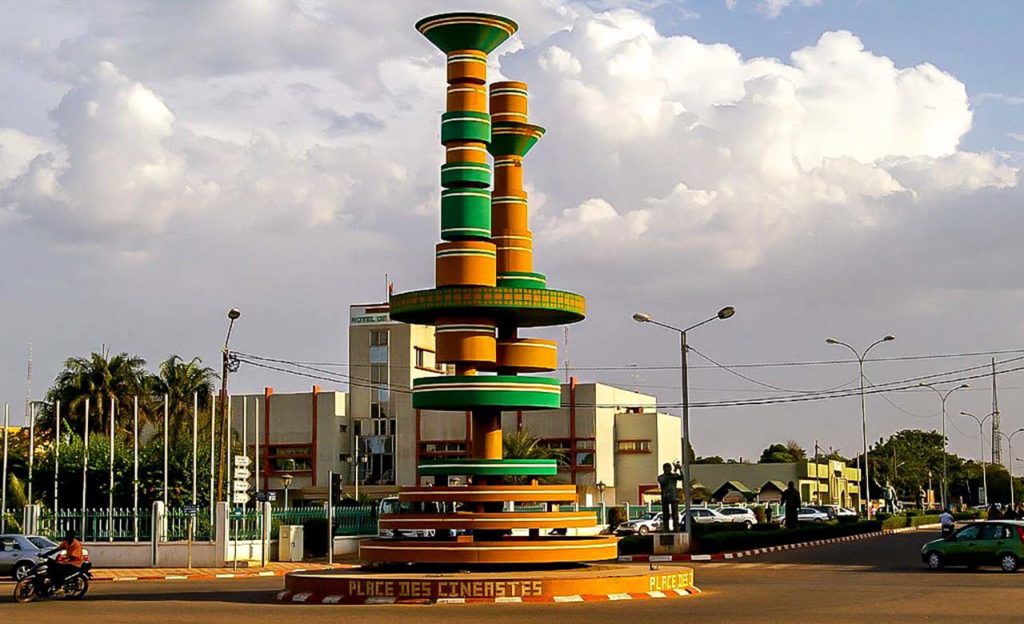
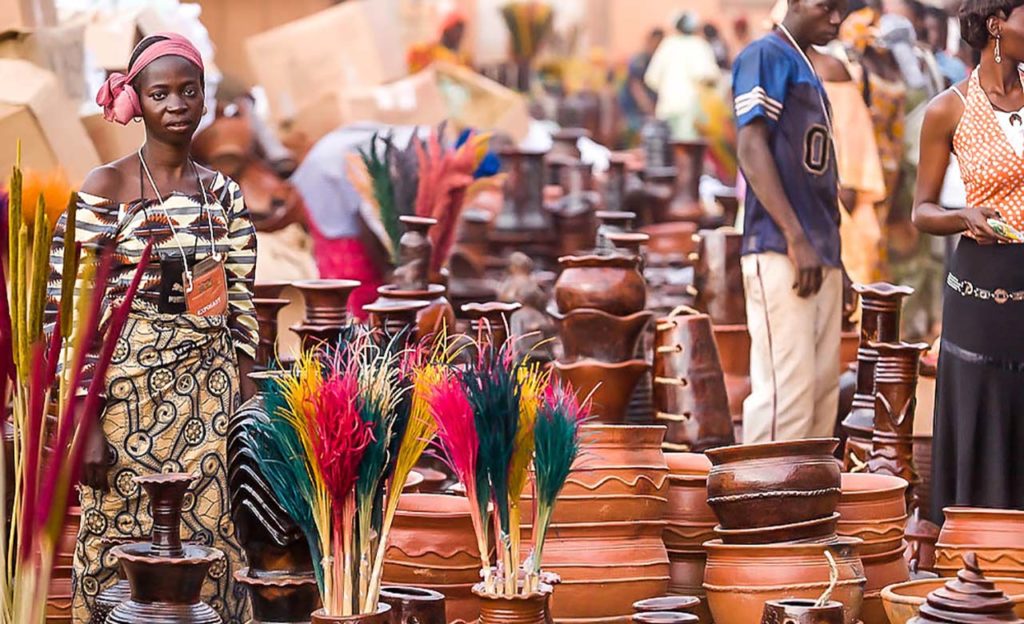
The Pan-African Film and Television Festival of Ouagadougou (FESPACO) is one of the biggest African film festivals. It takes place every two years in Ouagadougou, the capital of Burkina Faso. It is also one of the few remaining state film festivals in the world. The festival was created in 1969 in Ouagadougou on the initiative of a group of film lovers, including François Bassolet, Claude Prieux (Director of the Franco-Voltaic Cultural Centre) and Alimata Salembéré who was the first president from 1969 to 1970. At the time, the country had no film structures and the Voltaic population did not have access to African productions, which were becoming more and more numerous. The initiators therefore wanted to use the festival to give the population access to African films.
The idea of creating the Ouagadougou International Handicrafts Fair (SIAO) was born from the will of the political authorities who realized that handicrafts could also contribute greatly to the growth of African economies in the same way as agriculture. The fair opened its doors in 1984 and began with the sale of handicrafts, with some thirty African countries participating. An administrative structure was then set up to better manage the event. Since its creation, the SIAO has been in great demand by African countries. It is organized every two (2) years, it constitutes an ideal framework and an international showcase for African craftsmen who thus have the opportunity to exhibit their products, to market them and to export their know-how on an international platform.
Historical Tourism
Cultural Tourism
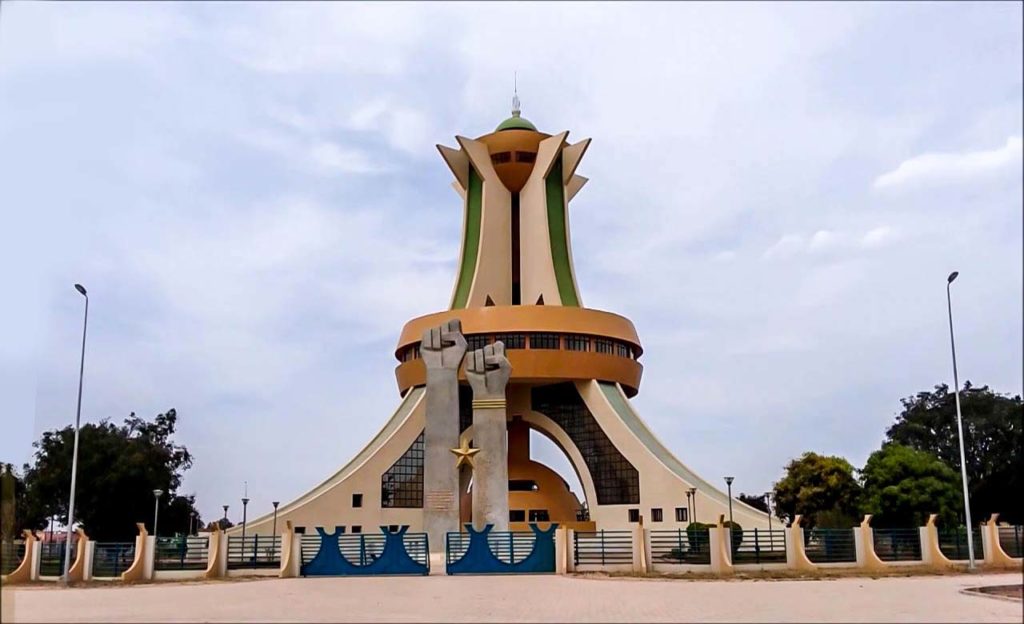

Burkina Faso has a rich heritage of remarkable natural and historical sites. Colonial buildings, monuments and museums will delight lovers of history and architecture. Some of these ancient remains are listed as UNESCO World Heritage sites. You will discover historical monuments such as the monument of national heroes, the great mosque of Ouagadougou, the ruins of Loropéni, the domes of Fabedougou, the peaks of Sindou, the royal palace of Tiebele, the great mosque of Bobo Diolassou and many other historical vestiges.
Burkina Faso’s culture is extremely rich and diverse. With its traditional architecture, cuisine, festivals, folkloric ceremonies, crafts and social organization based on ancestral values, its taste for music, dance and clothing, Burkina Faso has a huge and unique culture. The country is divided into several ethnic groups and large cultural areas. Burkina Faso has about sixty ethnic groups of demographic importance that have blended together over the centuries in perfect symbiosis. They are linked by deep-rooted cultural ties. Some ethnic groups have been living in the country for a long time, while others joined later for various reasons. This ethnic diversity also leads to an abundance of rites, customs and languages.
Business and Congress Tourism
Sports Tourism

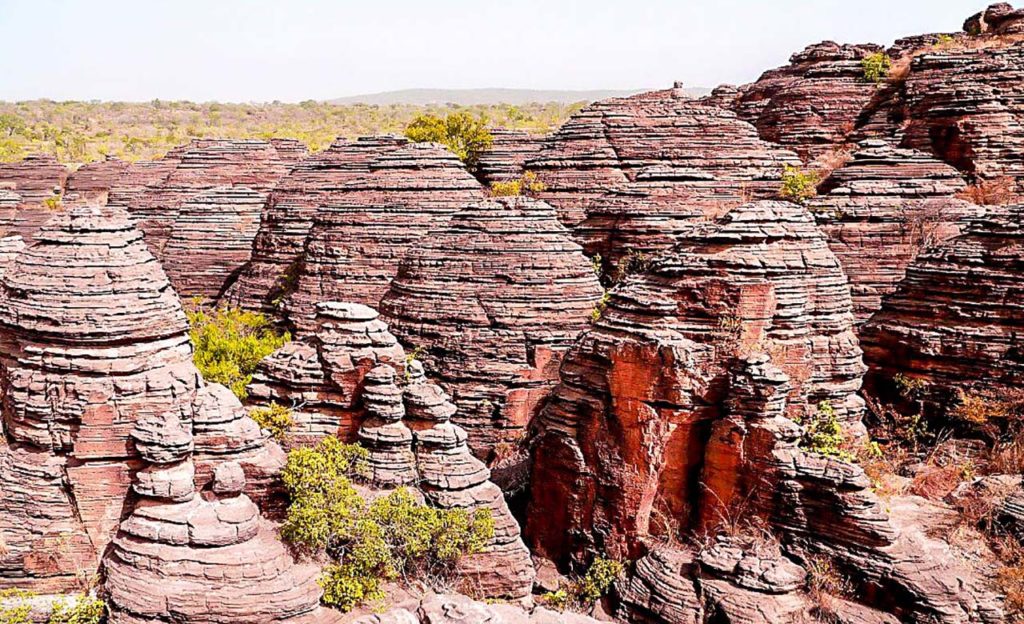
As the commercial crossroads of West Africa, Burkina Faso offers immense business opportunities. Burkina has several infrastructures required for business tourism. Prestigious reception venues, conference rooms and numerous centres equipped to host conferences, seminars, conventions and other trade fairs. With a modern communication network and world-class hotel facilities, Burkina has several assets that make it one of the best African destinations for business, conventions and seminars.
On foot, by car, by pirogue, by kayak and even on horseback, Burkina Faso has several unmissable trails for sports tourism. Hikes in unknown lands in total communion with nature, off the beaten track, to discover sites nestled in the heart of lush landscapes, forests, savannahs, waterfalls, islands etc. A wide range of tours awaits you. Hiking on the plateaus, ridges and valleys are proposed to meet the friendly populations and several summits will allow you to escape in altitude.
Agricultural Tourism
Sustainable Tourism

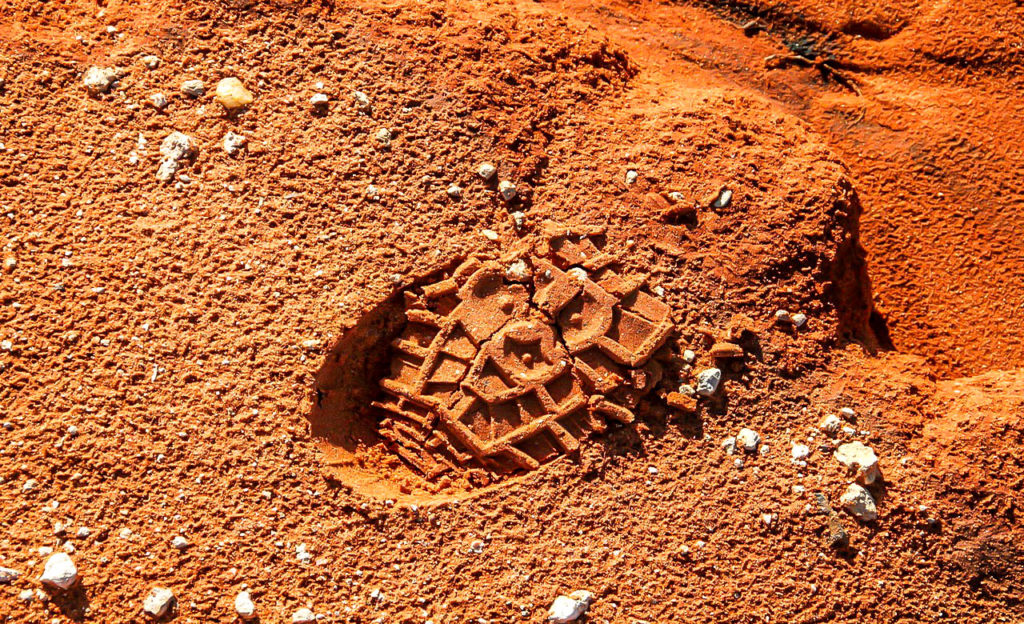
Agritourism is a form of tourism that aims to discover the agricultural know-how of a territory. It includes reception and accommodation services and is winning over more and more nature lovers each year. It puts agricultural producers in contact with foreign tourists, thus enabling them to discover Burkina Faso’s rural agricultural heritage. This generates economic development for Burkinabe farmers.
The term sustainable tourism generally describes all forms of alternative tourism that respect, preserve and enhance natural, cultural and social resources in a sustainable manner so as to minimize the negative impacts they may generate. The promotion of sustainable tourism in Burkina Faso will allow local population’s access to international visitors and thus create employment / business opportunities while preserving the environment.
Religious Tourism
Hunting Tourism


Also known as tourism of faith, religious tourism is the tourism-related use of holy places for pilgrimage, religious gathering or leisure purposes. Burkina Faso is a secular state that is distinguished by, among other things, its religious diversity, whose followers live peacefully together. Religions and various beliefs play an important role in the culture and daily life of the Burkinabe. The majority of the Burkinabe population is Muslim (60.5%), while Christians account for 23.2%, including 19% Catholics and 4.2% Protestants, 15.3% animists, 0.6% other religions and 0.4% no religion. A country in which beliefs and traditions blend with modernity.
Burkina Faso has several hunting areas of about 500,000 ha which have been specially developed and well equipped around the national parks. In the south-eastern part of Burkina Faso, for example, there is the partial reserve of Pama, which is one of the most beautiful buffalo camps in Burkina Faso. Around the Buffalo camp is an area of shrubby savannah and large plains, interspersed with small mountains, covering 60,000 hectares and bordered by the river to the north. This area is ideal for big game hunting and is home to large lions, buffalo, magnificent Hippotragus (Koba), Defassa Cobs, Buffon’s Cobs, Redunca Cobs, hartebeests, Warthogs and many other animal species.
The Fespaco

The Pan-African Film and Television Festival of Ouagadougou (FESPACO) is one of the biggest African film festivals. It takes place every two years in Ouagadougou, the capital of Burkina Faso. It is also one of the few remaining state film festivals in the world. The festival was created in 1969 in Ouagadougou on the initiative of a group of film lovers, including François Bassolet, Claude Prieux (Director of the Franco-Voltaic Cultural Centre) and Alimata Salembéré who was the first president from 1969 to 1970. At the time, the country had no film structures and the Voltaic population did not have access to African productions, which were becoming more and more numerous. The initiators therefore wanted to use the festival to give the population access to African films.
The SIAO

The idea of creating the Ouagadougou International Handicrafts Fair (SIAO) was born from the will of the political authorities who realized that handicrafts could also contribute greatly to the growth of African economies in the same way as agriculture. The fair opened its doors in 1984 and began with the sale of handicrafts, with some thirty African countries participating. An administrative structure was then set up to better manage the event. Since its creation, the SIAO has been in great demand by African countries. It is organized every two (2) years, it constitutes an ideal framework and an international showcase for African craftsmen who thus have the opportunity to exhibit their products, to market them and to export their know-how on an international platform.
Historical Tourism

Burkina Faso has a rich heritage of remarkable natural and historical sites. Colonial buildings, monuments and museums will delight lovers of history and architecture. Some of these ancient remains are listed as UNESCO World Heritage sites. You will discover historical monuments such as the monument of national heroes, the great mosque of Ouagadougou, the ruins of Loropéni, the domes of Fabedougou, the peaks of Sindou, the royal palace of Tiebele, the great mosque of Bobo Diolassou and many other historical vestiges.
Sports Tourism

On foot, by car, by pirogue, by kayak and even on horseback, Burkina Faso has several unmissable trails for sports tourism. Hikes in unknown lands in total communion with nature, off the beaten track, to discover sites nestled in the heart of lush landscapes, forests, savannahs, waterfalls, islands etc. A wide range of tours awaits you. Hiking on the plateaus, ridges and valleys are proposed to meet the friendly populations and several summits will allow you to escape in altitude.
Cultural Tourism

Burkina Faso’s culture is extremely rich and diverse. With its traditional architecture, cuisine, festivals, folkloric ceremonies, crafts and social organization based on ancestral values, its taste for music, dance and clothing, Burkina Faso has a huge and unique culture. The country is divided into several ethnic groups and large cultural areas. Burkina Faso has about sixty ethnic groups of demographic importance that have blended together over the centuries in perfect symbiosis. They are linked by deep-rooted cultural ties. Some ethnic groups have been living in the country for a long time, while others joined later for various reasons. This ethnic diversity also leads to an abundance of rites, customs and languages.
Religious Tourism

Also known as tourism of faith, religious tourism is the tourism-related use of holy places for pilgrimage, religious gathering or leisure purposes. Burkina Faso is a secular state that is distinguished by, among other things, its religious diversity, whose followers live peacefully together. Religions and various beliefs play an important role in the culture and daily life of the Burkinabe. The majority of the Burkinabe population is Muslim (60.5%), while Christians account for 23.2%, including 19% Catholics and 4.2% Protestants, 15.3% animists, 0.6% other religions and 0.4% no religion. A country in which beliefs and traditions blend with modernity.
Agricultural Tourism

Agritourism is a form of tourism that aims to discover the agricultural know-how of a territory. It includes reception and accommodation services and is winning over more and more nature lovers each year. It puts agricultural producers in contact with foreign tourists, thus enabling them to discover Burkina Faso’s rural agricultural heritage. This generates economic development for Burkinabe farmers.
Hunting Tourism

Burkina has several ecotourism sites that will allow you to get away from the stress of the hectic city life, to immerse yourself in an elegant, pristine and pure nature, to smell its scent, to breathe the fresh air of the rainforest, to relax, to go on canoe trips, to go hiking, to contemplate the animals and to forget the worries of everyday life. Burkina Faso has a remarkable concentration of wildlife.
Business and Congress Tourism

As the commercial crossroads of West Africa, Burkina Faso offers immense business opportunities. Burkina has several infrastructures required for business tourism. Prestigious reception venues, conference rooms and numerous centres equipped to host conferences, seminars, conventions and other trade fairs. With a modern communication network and world-class hotel facilities, Burkina has several assets that make it one of the best African destinations for business, conventions and seminars.
Ecotourism

Burkina has several ecotourism sites that will allow you to get away from the stress of the hectic city life, to immerse yourself in an elegant, pristine and pure nature, to smell its scent, to breathe the fresh air of the rainforest, to relax, to go on canoe trips, to go hiking, to contemplate the animals and to forget the worries of everyday life. Burkina Faso has a remarkable concentration of wildlife.
